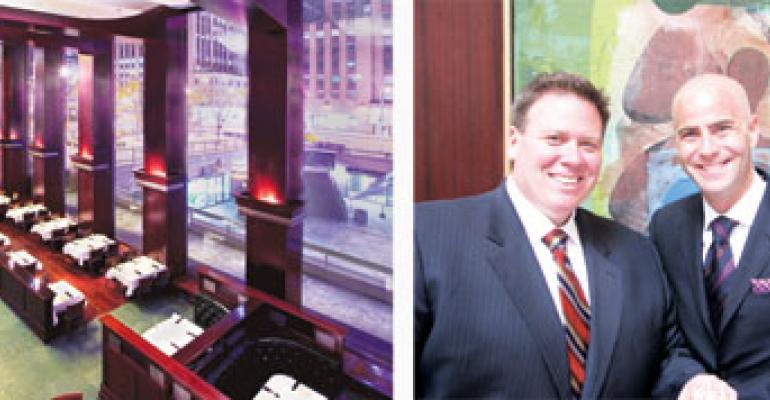High-end steakhouses have been hit hard during this recession, as both consumers and businesses rein in their spending on big-ticket meals.
In New York City, the pain has been particularly acute, as steakhouses watched Wall Street expense accounts melt with the market’s implosion, and many corporations eliminated their pricey holiday parties, stunning even the most veteran of restaurateurs. Stephen Hanson, president of B.R. Guest Restaurants, a multiunit operator of many high-end concepts in New York, said customer traffic just died at the end of last year, really hurting those restaurants that depend on large corporate bookings.
Chain steakhouses like Ruth’s Chris Steakhouse and Morton’s recently have recorded deep double-digit drops in same-store sales, which they blame on severe declines in convention business, hotel occupancy and air travel, all of which directly correlate to the volume of business and group dining.
Yet, even in this environment, Del Frisco’s Double Eagle Steak House in Mid-town Manhattan managed to post a 5-percent increase in total sales in 2008, to more than $35 million. The location’s gross sales topped all New York City independent restaurants, including such heavyweights as Tavern on the Green and fellow steakhouse Smith & Wollensky.
“It is so important to hold your client’s hand during this downturn,” says Scott Gould, general manager of the Manhattan Del Frisco’s. “Our banquet manager said she was concerned as the downturn got into full swing during peak holiday season.… I told her ‘No matter what, get them in the door.’”
BONUS POINT “[Del Frisco’s] is a sexy steakhouse.… They have managed to create a vibe, an experience, on top of being a fine-dining restaurant. It’s hospitality.”—Paul Goldstein, general manager, Tao New York
Flexibility, communication and accountability are all part of Gould’s management strategy, honed during seven years at Del Frisco’s, where he starting working as a server and rose to general manger nearly two years ago. He says he looks to the chief executive at parent company Del Frisco’s Restaurant Group LLC, Mark Mednansky, as well as one of the brand’s founders, Dee Lincoln, as mentors. He says there has “never been more a gregarious host” than Lincoln.
“Del Frisco’s understands the management process,” he notes.
His restaurant follows the Del Frisco’s standard of measuring everything and communicating with everyone. There are 260 employees in the New York Del Frisco’s, including 17 assistant mangers. Gould’s staff, always impeccably dressed and wearing welcoming smiles, works like a finely tuned watch. They perform figure eights around the restaurant’s grand staircase and two floors, and use “swarm service” to team up and quickly clear diners’ entrées when meals are finished. Each server only works with three tables.
Gould also works to keep the restaurant humming, saying consumers will always want to go where the action is, and that a leader needs to set the pace.
“You can’t manage from an office,” he says.
His pace is a hectic one, for certain. Gould and the restaurant’s maître d’, Felix Albano, who has been with the restaurant since its opening in 2000, work steadily to greet guests, visit tables, reaffirm loyal customers and create new regulars.
Playing to an employee’s strengths is paramount for any restaurant manager, Gould says, as it allows those who work well with people to remain on the floor and those that are a bit more reserved to remain focused on inventory, numbers or finding ways to control costs.
“More than anything you have to recognize peoples’ strengths,” he says. “Put the aces in their places.”
The success of the location is a team effort, Gould maintains. The Manhattan Del Frisco’s, like the other seven locations of the Wichita, Kan.-based boutique brand, holds daily meetings to address problems and provide positive or negative feedback to staff when warranted. They keep notes in the restaurant’s “red book,” and the closing manager leaves a nightly voicemail for all employees that details that day’s sales, labor, maintenance concerns and any issues that need attention the next day.
“What I hate most about the hospitality industry is that Great Wall of China between the front-of-the-house and the back-of-the-house,” Gould says. “Sommeliers need to know if someone is being wasteful; busboys need to know if we’re using too many linens; chefs need to get the best bids without sacrificing quality.… There needs to be continuity.” — [email protected]





